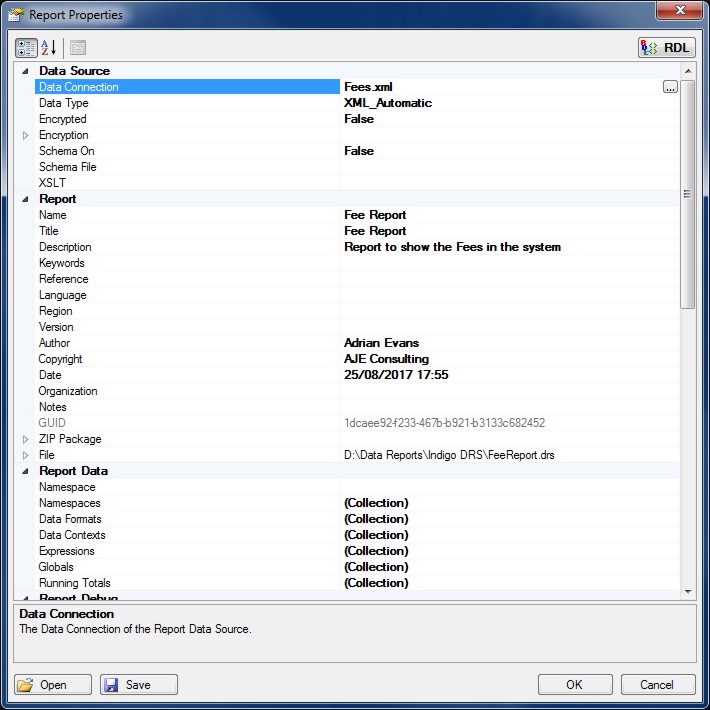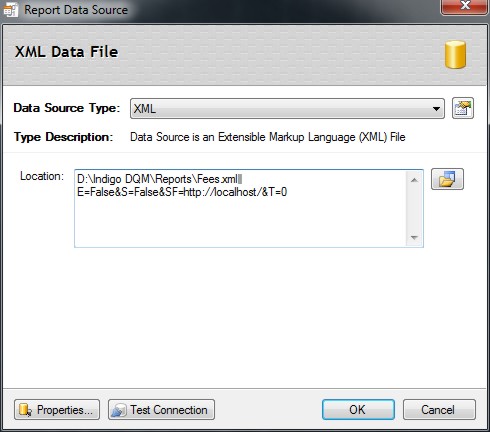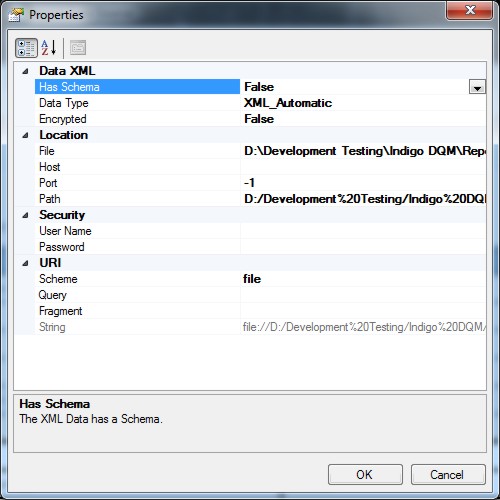Report Data Sources can be Files as an XML Data Set, XML document, CSV, JSon, XLSX or HTML and are loaded as XML for querying using XQuery and / or Python.
Data Sources can also be Databases such as MS SQL, MySQL, ODBC, OLEDB or an MS Access File with a Data Query.
A schema XSD File can also be applied to XML data in the Report property grid.
Report Data Schema's will be inferred as a typed schema from the Report Data Source if a valid XSD File cannot be found.

Click the Data Source icon to specify the Report Data Source which can reside either locally or on the Internet.

Advanced Data Properties
Advanced properties for the Report Data Source can be configured by clicking the properties button.

Click the OK button to update the advanced properties.
Report Data Contexts are used to drive and build Reporting output content and also allows the consolidation and integration of data from multiple different sources and types such as API's, websites and data files to be read and used in the Report.
The default Data Context is the Report Data Source (XDM) root node. Data Contexts can be applied to specific Report elements allowing data in XML documents to be contextually enumerated.
To apply a Data Context to a Report element expand the Data Context property or click the (...) property button and specify the Content Type as either a Literal (Constant) or a File.
Context types can be XQuery, Python, XML, CSV, JSon, XLSX, HTML, MS SQL, MySQL, MDB, ODBC and OLEDB Data Sources that can be read and used in the Report.
Report XML Namespaces are used for providing uniquely named elements and attributes and is a mechanism to avoid name conflicts by differentiating elements or attributes within an XML document that may have identical names, but different definitions. If the Report Data Source contains namespaces they can be applied to the XQuery Processor.

To add Report Namespaces open the Report properties dialog and select Namespaces from the property page.
Add a Report Namespace with a Prefix and URI to the Report Namespaces Collection Editor to reflect the namespaces in the Report Data Source.
XSLT Reporting features Extensible Stylesheet Language Transformations which is a language for transforming XML documents into other XML documents or other formats such as HTML for web pages or plain text.
To specify an XSLT to transform the Report Data Source click the XSLT property button.

File URI's
Report File URI's are expressed as Uniform Resource Identifiers (URI) and can be either a Literal or a Query to specify the location of the File Resource. Literal values are constants that are determined by the URI File property.
Query based URI's are determined by the result of the URI Query which can be a series of XQuery or Python statements to specify the location of the File URI.

